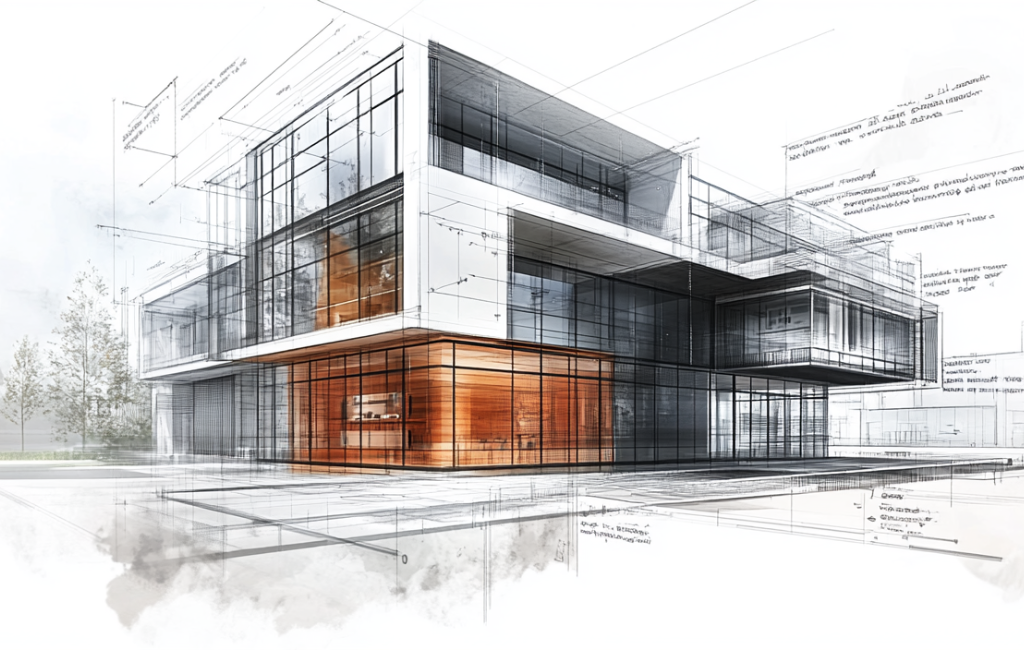Architect: Designing Dream Home
Designing your dream home is an exciting journey that requires careful planning and thoughtful decision-making. Whether you’re starting from scratch or renovating an existing space, the process can be both rewarding and challenging. This article provides valuable insights and practical tips to help you create a home that reflects your personality and meets your needs.
Understanding Your Needs and Lifestyle
Before diving into the design process, it’s important to understand your needs and lifestyle. Consider the following aspects:
- Family Size: The number of people living in the house will influence the number of bedrooms, bathrooms, and common areas.
- Daily Activities: Think about your daily routines and how different spaces can accommodate them.
- Future Plans: Anticipate any future changes, such as a growing family or the need for a home office.
By understanding these factors, you can create a home that is both functional and comfortable.
Choosing the Right Location
The location of your home plays a significant role in your overall satisfaction. Consider factors such as:
- Proximity to Work and Schools: A convenient location can save time and reduce stress.
- Neighborhood Safety: Research crime rates and community safety measures.
- Access to Amenities: Look for nearby parks, shopping centers, and healthcare facilities.
Choosing the right location can enhance your quality of life and increase the value of your property.
Setting a Realistic Budget
Budgeting is a critical step in the home-building process. Start by determining how much you can afford to spend. Consider the following expenses:
- Land Purchase: The cost of the land where you plan to build.
- Construction Costs: Materials, labor, and permits.
- Interior Finishes: Flooring, cabinetry, and fixtures.
- Unexpected Expenses: Set aside a contingency fund for unforeseen costs.
A well-planned budget can help you avoid financial stress and keep your project on track.
Working with Professionals
Collaborating with experienced professionals can make the design and construction process smoother. Key professionals include:
- Architects: They can help you create a functional and aesthetically pleasing design.
- Contractors: Responsible for the actual construction of your home.
- Interior Designers: Assist with selecting finishes and furnishings that match your style.
Choosing the right team can ensure that your vision is brought to life efficiently and effectively.
Incorporating Sustainable Design
Sustainable design is becoming increasingly popular as homeowners seek to reduce their environmental impact. Consider incorporating the following elements:
- Energy-Efficient Appliances: Reduce energy consumption and lower utility bills.
- Solar Panels: Generate renewable energy and decrease reliance on fossil fuels.
- Water-Saving Fixtures: Conserve water and reduce waste.
- Eco-Friendly Materials: Use sustainable and recycled materials for construction and finishes.
By incorporating sustainable design, you can create a home that is both environmentally friendly and cost-effective.
Maximizing Space and Functionality
Efficient use of space is key to creating a comfortable and functional home. Consider the following tips:
- Open Floor Plans: Create a sense of spaciousness and improve flow between rooms.
- Multi-Functional Rooms: Design spaces that can serve multiple purposes, such as a guest room that doubles as a home office.
- Built-In Storage: Maximize storage space with built-in cabinets and shelves.
Thoughtful space planning can enhance the usability and enjoyment of your home.
Personalizing Your Space
Your home should reflect your personality and style. Consider the following ways to personalize your space:
- Color Schemes: Choose colors that resonate with you and create the desired mood.
- Unique Features: Incorporate custom elements, such as a statement staircase or a cozy reading nook.
- Artwork and Decor: Display pieces that have personal significance or add visual interest.
Personal touches can make your home feel truly yours and create a welcoming atmosphere.
Case Studies and Examples
Looking at real-life examples can provide inspiration and practical insights. Here are a few case studies:
- The Smith Family Home: A modern, energy-efficient home designed with an open floor plan and sustainable materials.
- The Johnson Residence: A traditional home with custom features, such as a home theater and a gourmet kitchen.
- The Lee House: A compact urban home that maximizes space with multi-functional rooms and built-in storage.
These examples demonstrate how different design choices can create unique and functional homes.
Conclusion
Designing your dream home is a rewarding endeavor that requires careful planning and thoughtful decision-making. By understanding your needs, choosing the right location, setting a realistic budget, working with professionals, incorporating sustainable design, maximizing space, and personalizing your space, you can create a home that reflects your personality and meets your needs. Real-life examples and case studies can provide valuable inspiration and insights. With the right approach, you can turn your dream home into a reality.
